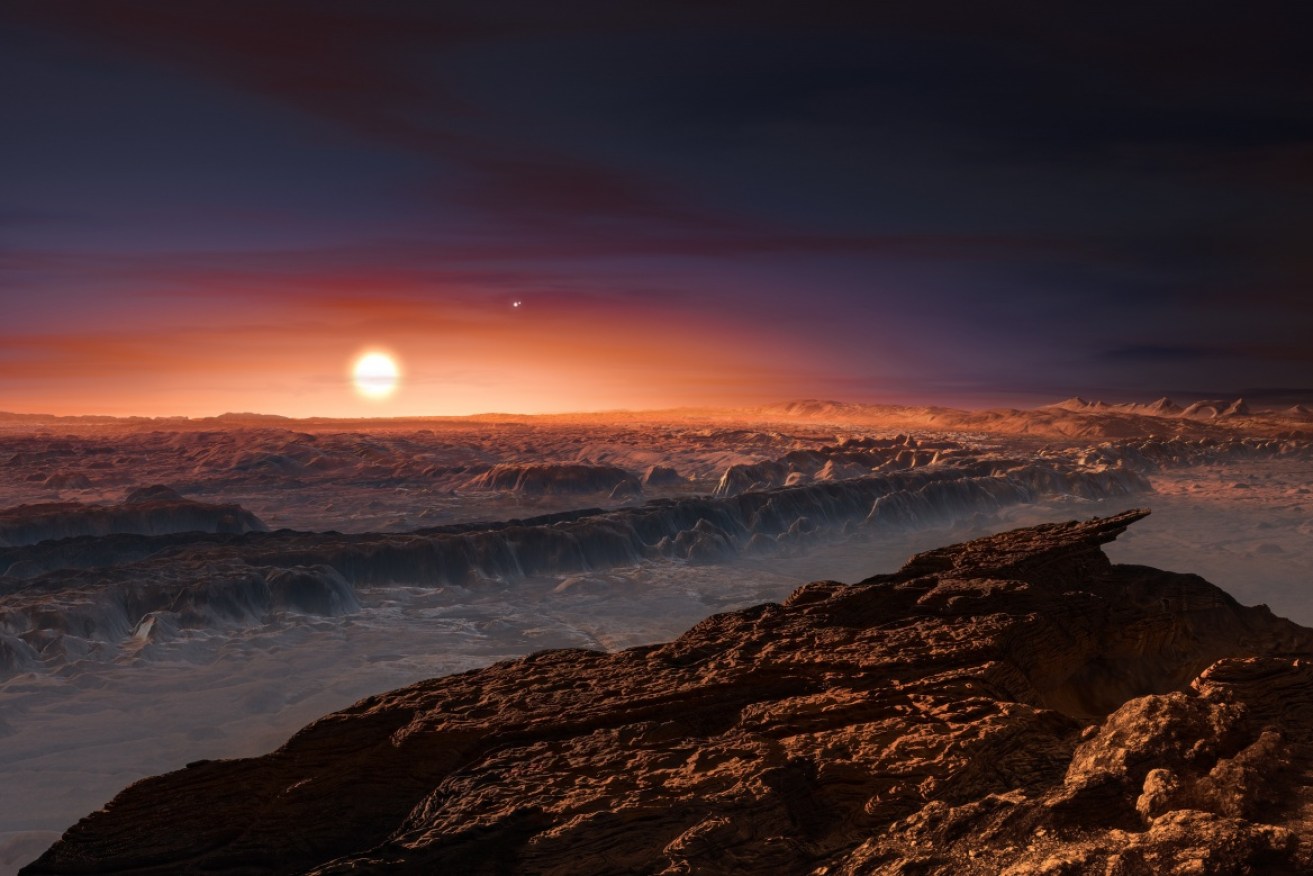Scientists find second Earth that ‘could harbour life’

An artist's impression of a view of the surface of the planet Proxima b, the closest star to the Solar System. Photo: AAP
A new planet discovered orbiting the closest star to Earth’s solar system could have the conditions to harbour life, according to a team of international scientists.
The exoplanet (a planet that circles a star other than our sun) was found orbiting Proxima Centauri and has been given the identifier Proxima b.
Proxima Centauri is a red dwarf star (a star with a lower mass than our sun) located four light-years from the solar system.
The star, which sits in the constellation of Centaurus between the two bright stars that point to the Southern Cross, is too faint to be seen with the unaided eye.
The international team, led by scientists from Queen Mary University of London, discovered the new planet after observing a “doppler wobble” – the effect caused by the planet’s gravitational tug on the motion of its host star.
Careful analysis of the tiny doppler shifts indicated the presence of a planet with a mass at least 1.3 times of the Earth, orbiting about 7 million kilometres from Proxima Centauri – only 5 per cent of the distance between the Earth and the sun.
Proxima b orbits its parent star every 11.2 days, and scientists say its estimated temperature would allow liquid water to exist on its surface.
According to the report, the findings “naturally raise the question of whether Proxima Centauri b could harbour life”.
“Proxima b is in what is known as the Habitable (or Goldilocks) Zone which means it’s not too hot and its not too cold,” Professor Tim Bedding, of the University of Sydney, said of the study.

An artist’s impression of the planet orbiting Proxima Centauri. Photo: European Southern Observatory
“There’s no reason to know whether or not there is life there, but the fact that the planet exists and is in the zone where liquid water might exist on the surface is very exciting.”
The Goldilocks Zone refers to the zone around a star where the temperature is just right – not too hot and not too cold – for liquid water to exist on an planet.
Dr John Barnes, a co-author of the study, said: “If further research concludes that the conditions of its atmosphere are suitable to support life, this is arguably one of the most important scientific discoveries we will ever make.”
Prior to the discovery of Proxima b, the closest-known potentially habitable exoplanet was Wolf 1061c, located 14 light-years away.
“Many of the planets discovered up until now have been much further away”, Dr Bedding explained.
“Astronomically speaking this planet is on our doorstep”.








